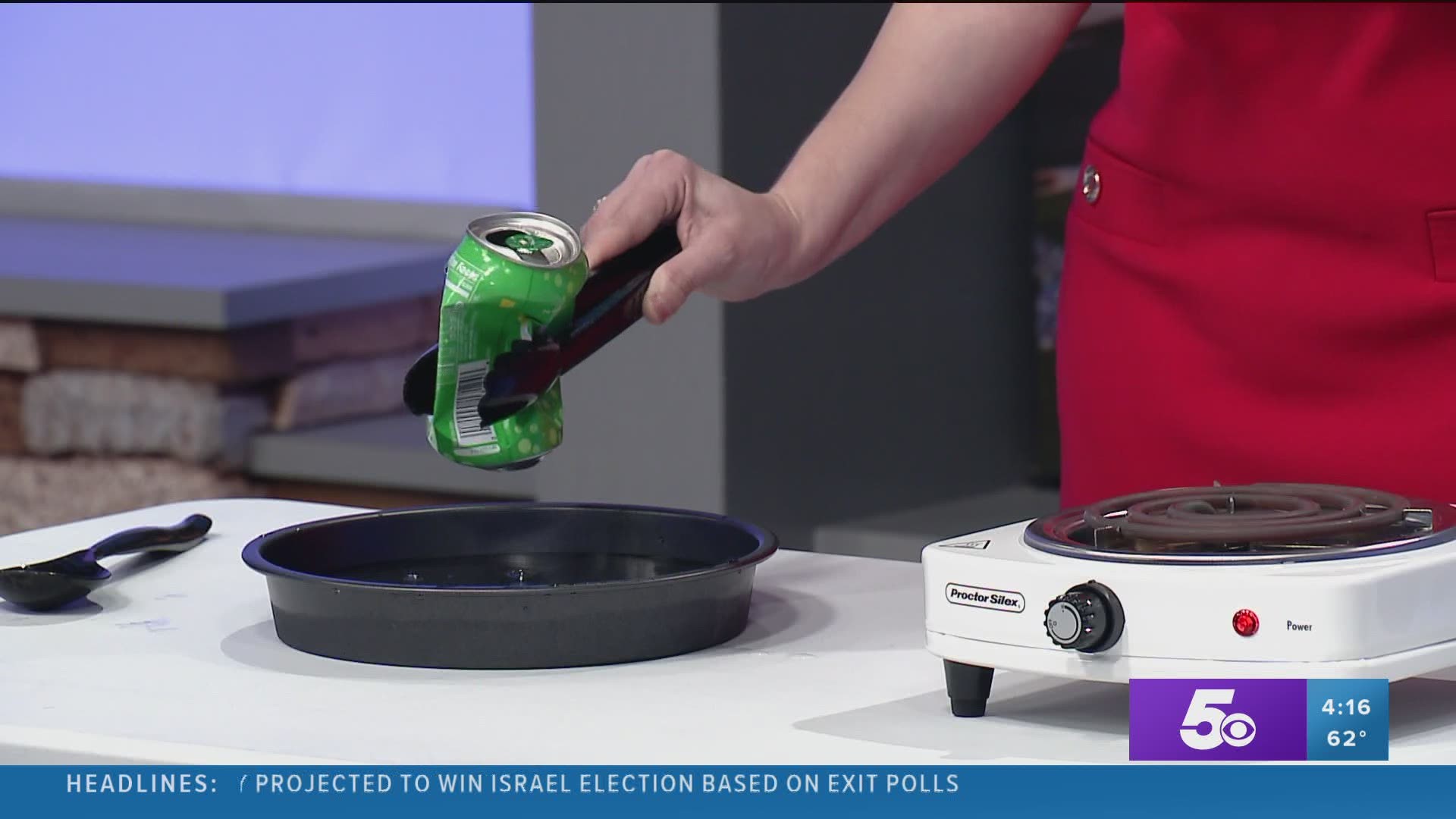Weather happens all around us. A big component in our weather is atmospheric pressure. Air pressure is really, really powerful.
On this week's science lesson, we're explaining how air moves around in our atmosphere. We're conducting an experiment called "air pressure can crusher".
Grab these items that you likely have around your kitchen: a burner, a soda can, a bowl of very cold water, and tongs.
Make sure that you empty the soda cans and rinse them out. Add a few tablespoons of water to the bottom of the soda can. It should be just enough to cover the bottom.
Now, place the soda can on top of the burner and turn the burner on. If you're doing this experiment with kids, an adult should do this step. The water will start to heat up, and, soon, you'll hear it bubbling. Within a few minutes, there will be steam coming out of the top. This is when you know it's ready.
Keep the bowl of cold water next to the burner. Grab the soda can by using the tongs. Make sure you have a good grip before you lift it up. Now, swiftly turn the can over onto the ice cold water.
In an instant, the soda can imploded as the two temperature extremes collided.
Here's the science of it.
Heating up the can forced the air molecules out of it. When we put it in the cold water, we suddenly cooled it. This caused the water in the can to condense, forming a partial vacuum.
Now, the pressure outside the can is greater than inside of it. Nature always wants to balance out, so the pressure difference crushed the can.

